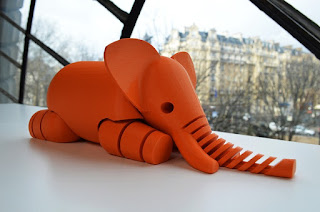Additive Manufacturing
Additive manufacturing or the so-called “3D printing” has seen a huge purge in the industry. The ability to make any three-dimensional solid object from just a digital copy is what makes it one of the latest ‘superpower’ in the manufacturing sector. 3D Printing is a process for making a physical object from a three-dimensional digital model, usually by laying down many successive thin layers of material. It brings a digital copy ( CAD representation) into its physical form by adding layer by layer of materials. Additive manufacturing has the ability to bring production companies closer to the end user reducing all other supply mediums. Personalized products according to a particular consumer and the benefit of having a small batch of products without monetary losses on inventories are sure to make this technology widely adopted soon. Though 3d printing technology was already available from the 1980s, they were only used to make prototypes for various manufacturing sectors. During the mid-1990s, the sector started to show signs of distinct diversification with two specific areas of emphasis that are much more clearly defined today. First, there were the high end of 3D printing, still very expensive systems, which were geared towards part production for high value, highly engineered, complex parts. Second, there were 3D printing system manufacturers who made ‘concept prototypes’ which were user-friendly and cost-effective for office use. This technology has a huge impact on the manufacturing sector and has the potential to bring about a massive disruption in manufacturing. 2018 has seen another significant upswing in the adoption of 3D printing, both on a consumer and professional level. Low-cost 3D printers are making way for home buyers.
 | |
A sample 3D printed object
( You can download free sample designs and print out your own 3D models,
but of course with a 3D printer)
(Photo: Google pics)
|
Different types of 3D printers use different kinds of technology. For example some 3D printers process powdered materials (nylon, plastic, ceramic, metal), which utilize a light/heat source to smelt/fuse layers of the powder together in the defined shape. Others process polymer resin materials and again utilize a light/laser to solidify the resin in ultra-thin layers. Jetting of fine droplets is another 3D printing process, reminiscent of 2D inkjet printing, but with superior materials to ink and a binder to fix the layers. Perhaps the most common and easily recognized process is deposition, and this is the process employed by the majority of entry-level 3D printers. This process extrudes plastics, commonly PLA or ABS, in filament form through a heated extruder to form layers and create the predetermined shape. Because parts can be printed directly, it is possible to produce very detailed and intricate objects, often with functionality built in and negating the need for assembly.
However 3D printers are not yet just as simple as- make a model and print it out. It is a time-consuming process. The design preparation and its conversion to a model are time-consuming and complicated. However, continuous updates to the software that power these and frequent fixes and upgrades are sure to make them ready for widespread use.
~ Shaikat Mukherjee
Previous Article :
Follow us on :
Facebook page :
Instagram :
Twitter :





Comments
Post a Comment